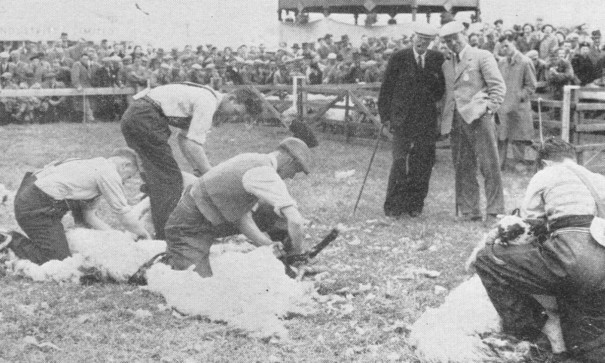The 1984 Royal Highland Show was a landmark occasion as the Queen made her first visit to Ingliston since attending the very first show to be held at the permanent site in its opening year, 1960.
Another landmark of the 1984 show was the change to the show dates, with the introduction of Sunday opening, and on June 17 some 43,000 people attended on the first day.
No doubt the new dates took a bit of getting used to following the traditional Tuesday-to-Friday format.
One feature of the 1984 event was the superb sunny weather which blessed the country all summer long, leading to droughts in many areas.
It led to an easy and early harvest, which in many cases was also a good one.
It ultimately became a tipping point regarding over-production and the connection between production and subsidy support mechanisms.
Therefore it could be argued the 1984 show would go down as the last feel-good event before the following high rainfall year of 1985 and lesser ones of 1986 and ’87 and the changes in support in 1990.
Agricultural support will still dominate this year’s show, with the new CAP changes recently announced.
So what of the previous years in the 20th Century that ended in a four?
The sun shone brightly in 1974, and a record crowd of 118,180 attended the show.
Joining them was Princess Alexandra, who stayed longer than planned to take in the whole programme on the final day.
Local success came with blacksmith David Wilson of Balmullo picking up the two main awards and the overall points award.
Behind the scenes an application was made to the society to include classes for the new Canadian Holstein breed of dairy cows.
The 1964 show consolidated itself further on the new permanent site, and there was also a visit by the Queen Mother.
There were still pig classes in the catalogue.
No Continental cattle were present, with the whole cattle section dominated by native breeds. The only casualty was the Guernsey breed classes, which were cancelled.
As far as machinery went it would be the last summer that Ford’s New Performance Dexta, Super Dexta and Fordson Super Major models would be exhibited.
Likewise Massey Ferguson’s 35 and 65 models also took a last bow before new models were launched by both manufacturers in December.
In 1954 the show was still on the road, and it was the south-west’s turn to play host, with the Queen Mother attending the 115th show at Dumfries.
It was the 14th show held in the town and was the biggest ever staged there with a record number of trade stands and an increase in livestock numbers on the previous year at Alloa.
One of the highlights was a tableau parade featuring Robert Burns, who had once farmed in the county.
There was, of course, no show in 1944 due to the war.
In fact, only two shows were held during the 1940s.
In 1934 the show was held in Bellahouston Park in Glasgow, one of 14 held in the city over the years.
Dry weather blessed the first three days.
However, gales and rain blighted the final day, resulting in a low crowd which stopped the show topping the 96,340 people attending in Dundee the previous year.
The Ayrshire breed had the highest number of cattle entries.
Border Leicesters were the dominant sheep breed, with 100 entries.
Perth hosted its last ever Highland Show in 1924 and the first since 1904 after turning down the society approach to stage the show in 1912, when Cupar was subsequently chosen to hold the event.
The next year the Perth area held the show was in 1933, when Riverside Drive in Dundee staged the first of three highly successful shows the others being 1949 and 1957.
Following the show the judges for the New Implement Award inspected the entrants in operation and subsequently awarded the Silver Medal to the Glasgow Electrical Engineering Co’s Apex Wind-Driven Dynamo.
It is funny how things have come around again.
As Europe stood on the brink of war in July 1914 Hawick played host to the show for the only time.
Hawick Gas Light Company supplied gas to drive demonstration engines and to the catering outlets.
In 1904 the event was held on Perth’s South Inch. In those days the show was in July, running from the 19th to the 22nd.
One key feature of this show was the large turnout of machinery and the first appearance at the Highland of agricultural motors or tractors, as we know them today.
Indeed, extensive field trials were carried out on much of this equipment later in the year, while the motion yard at the show saw stationary engines driving a wide range of barn machinery.
